Paper published in JGR
Published:
Eastern Canadian relative arrival-time tomography paper available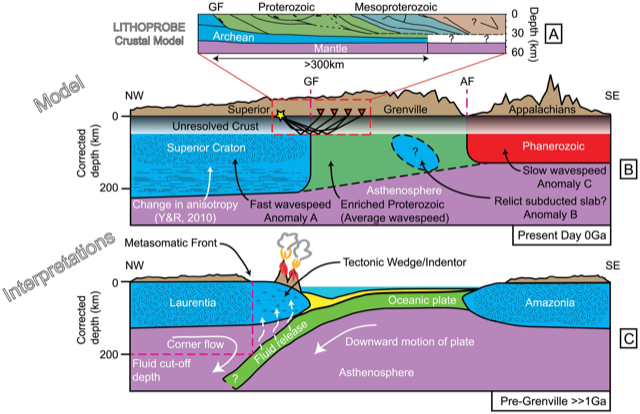
Published:
Eastern Canadian relative arrival-time tomography paper available
Published:
The Absolute Arrival-time Recovery Method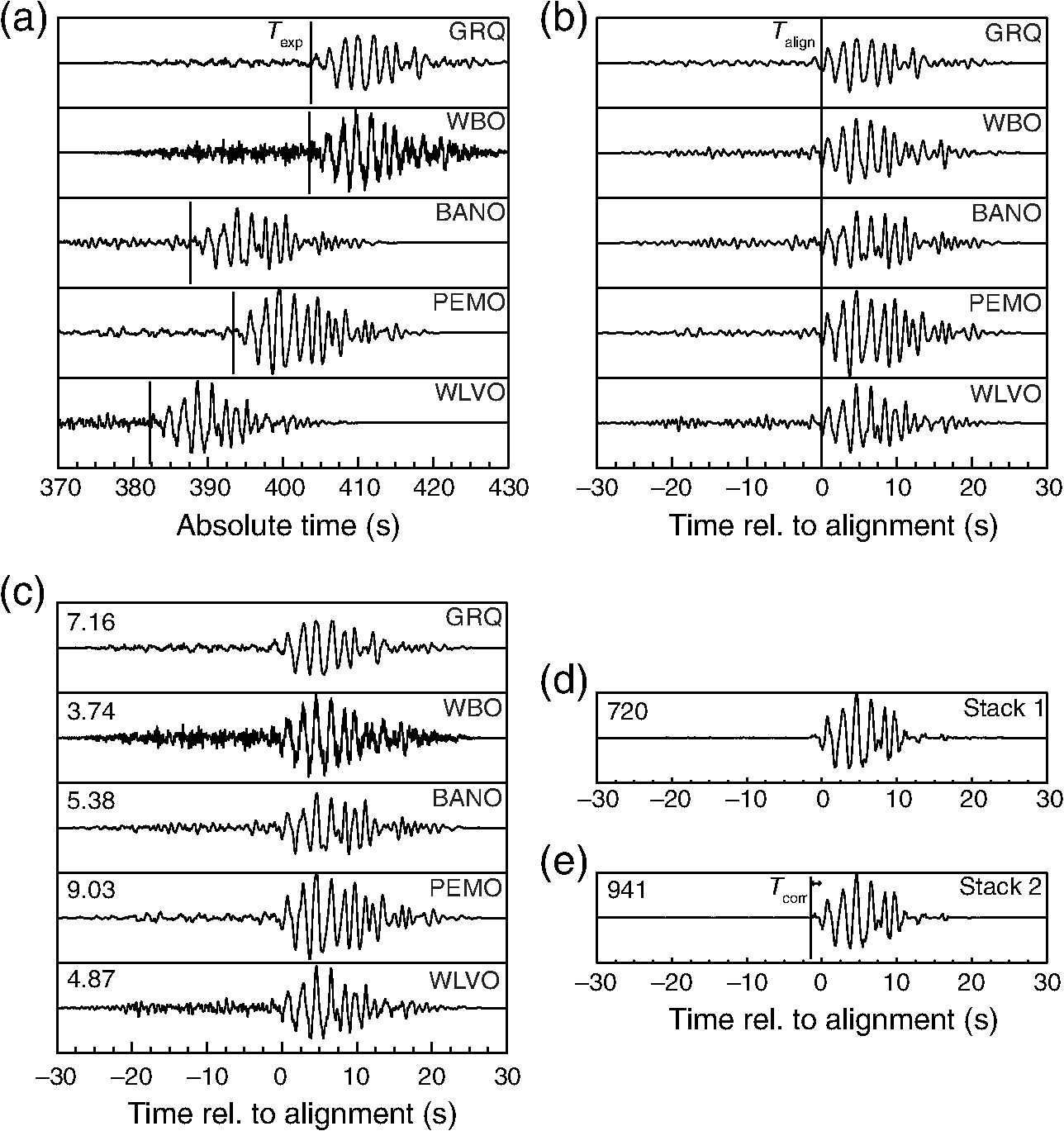
Published:
North American Absolute arrival-time tomography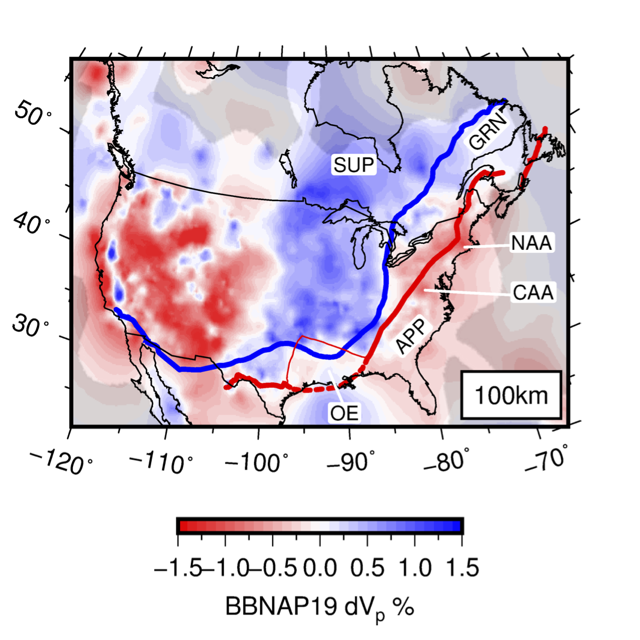
Published:
Deep Earth Explorers Sedgwick Museum of Earth Sciences exhibit opens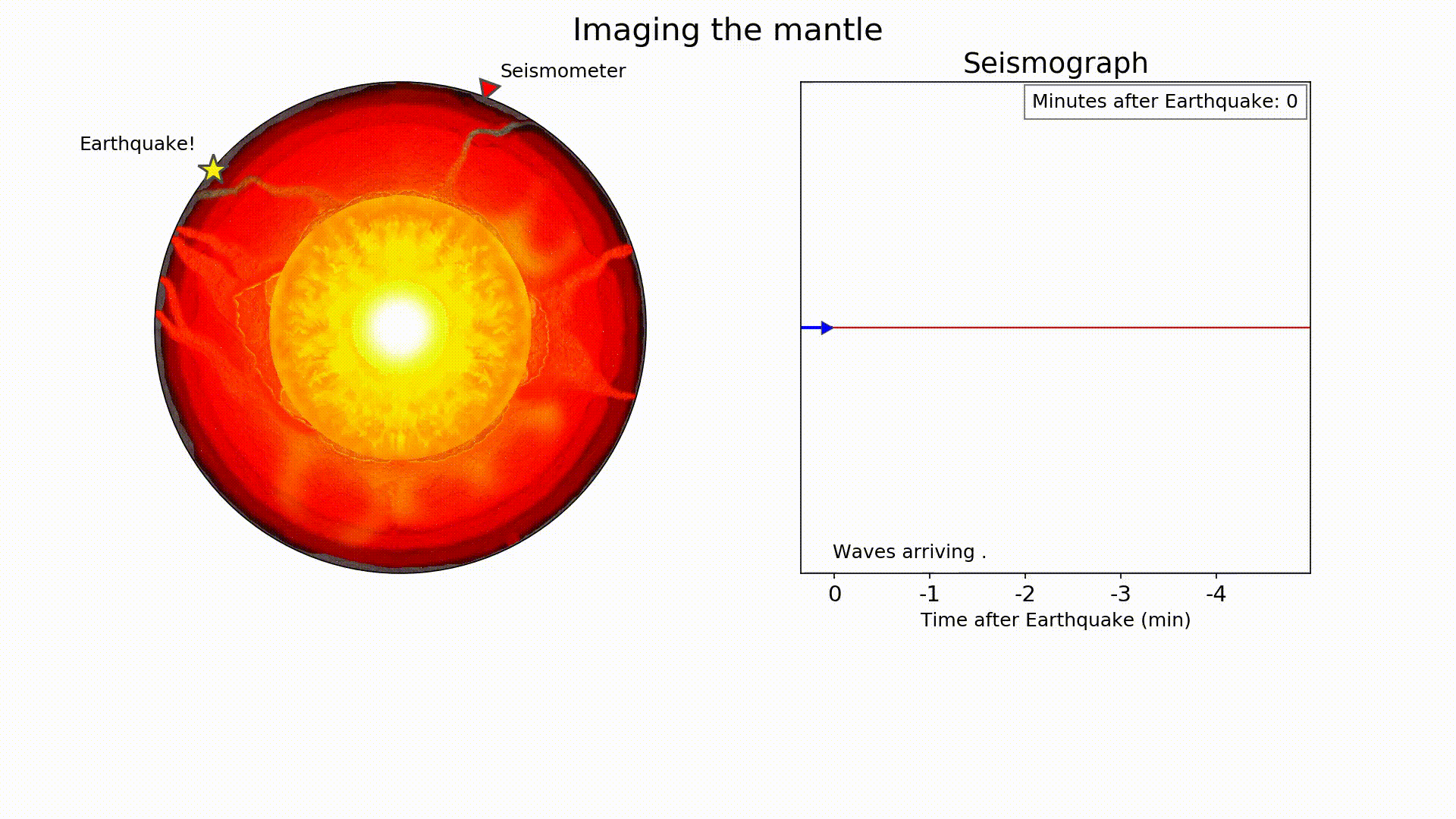
Published:
African Absolute arrival-time tomography model: AFRP20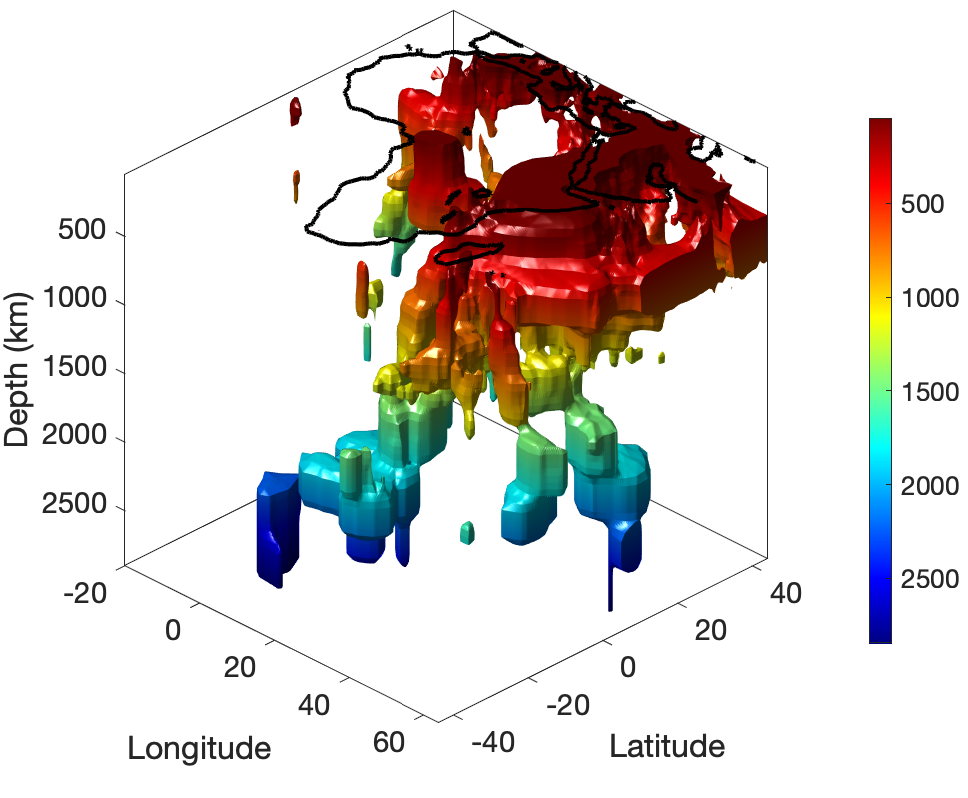
Published:
Using Receiver Functions to investigate the African Mantle transition zone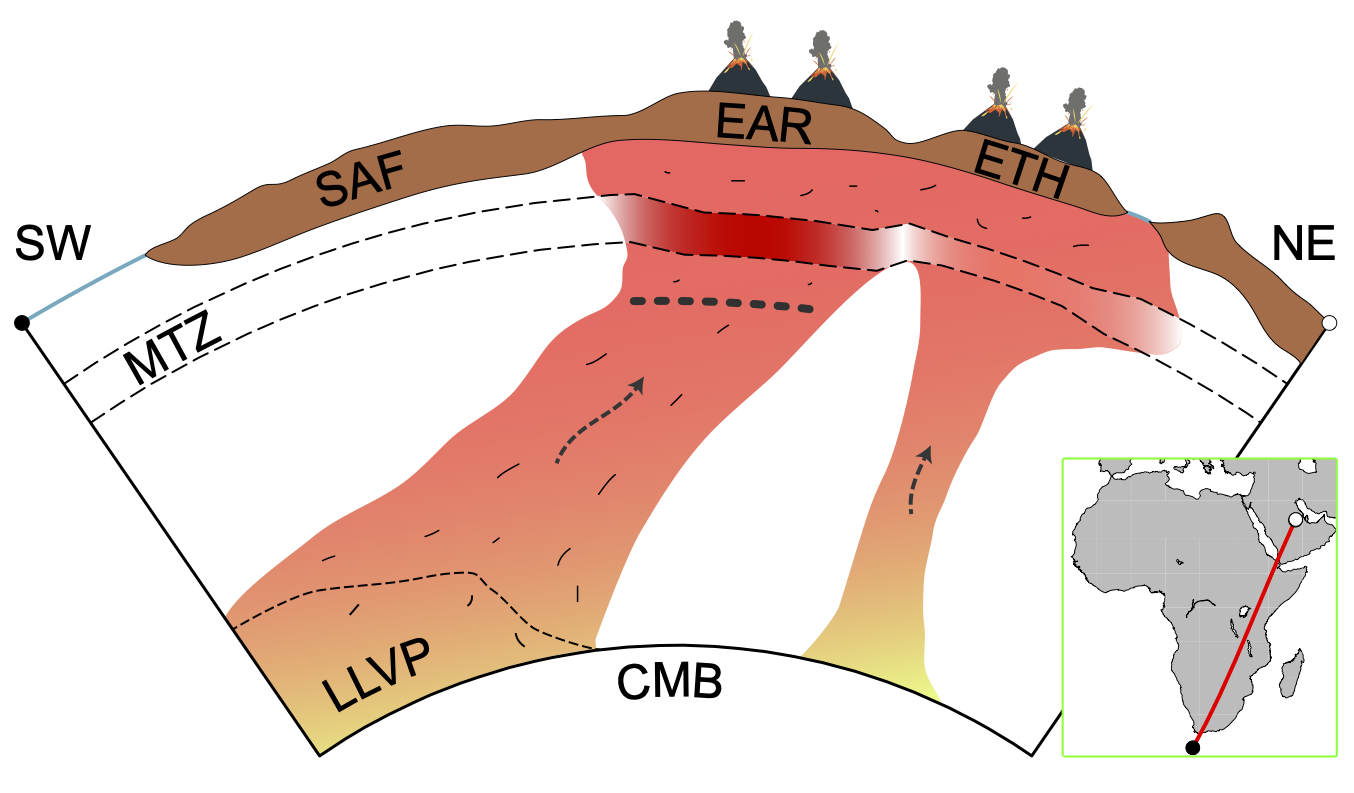
Published:
North American Absolute arrival-time tomography model: CAP22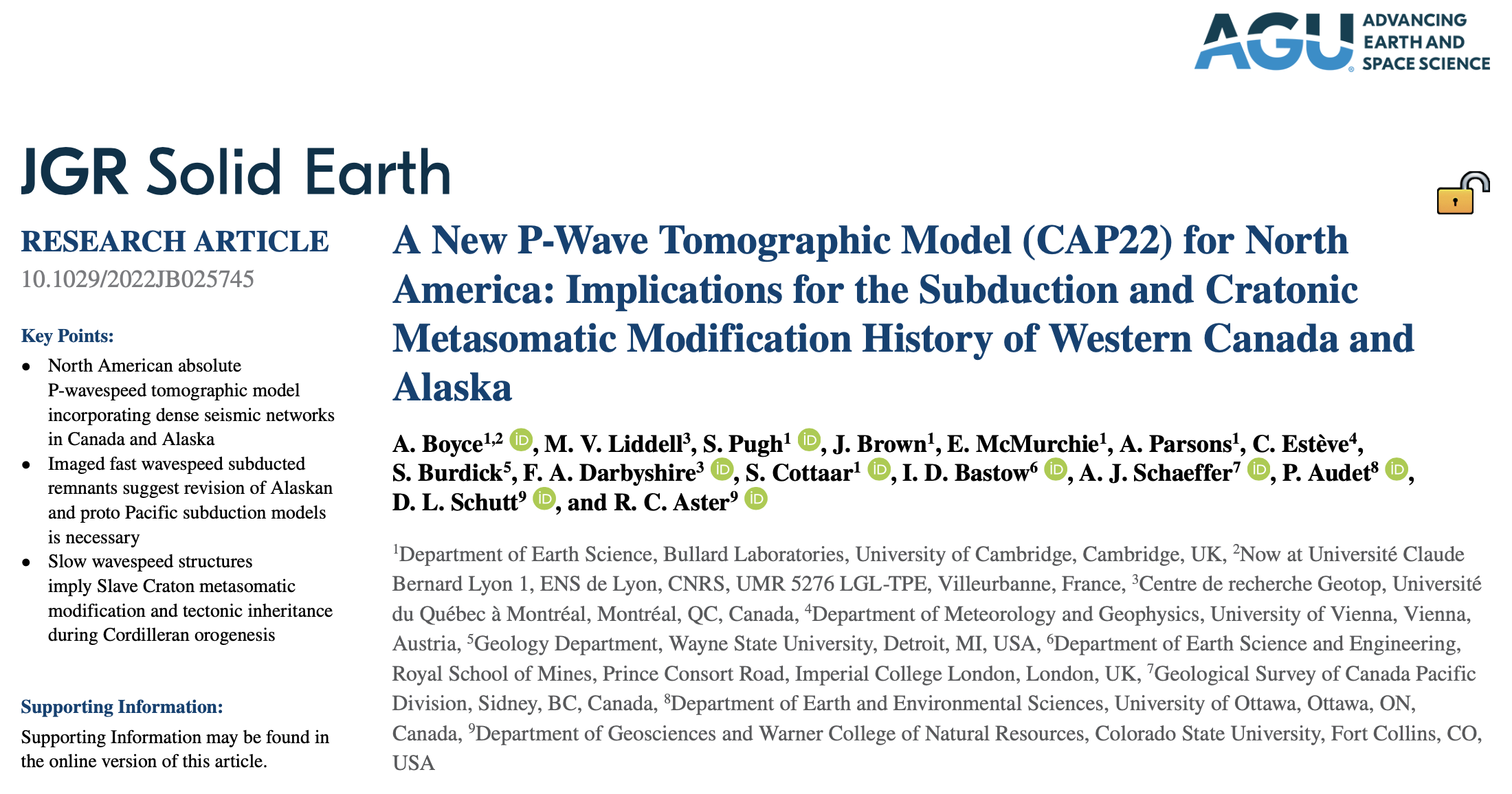
Published:
African Absolute arrival-time tomography model: AFRP22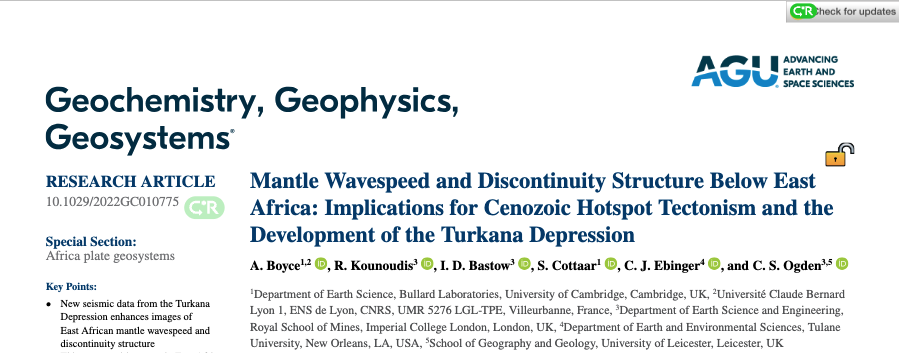
Published:
North American Absolute arrival-time tomography model: CAP22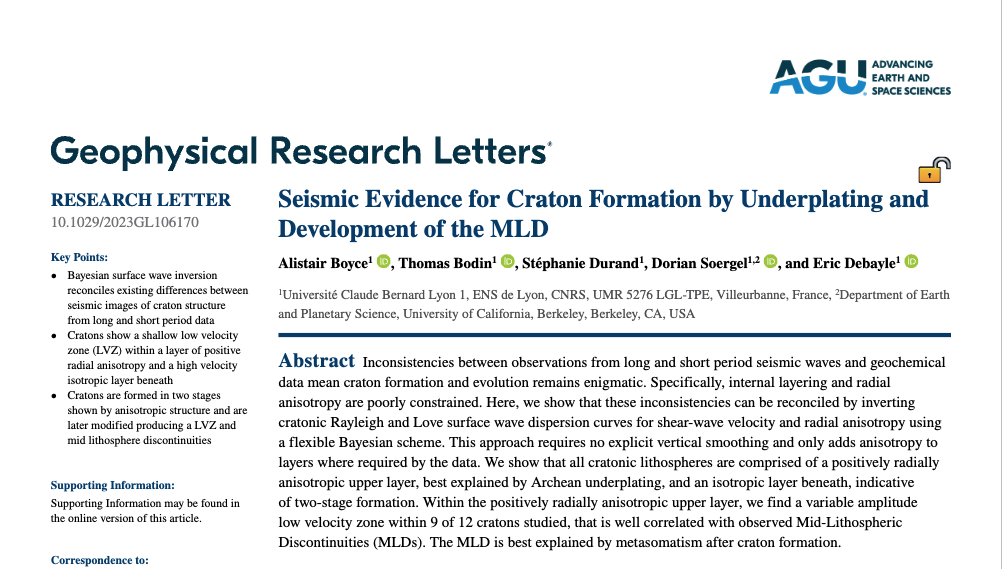
Published in Geophys. J. Int., 2016
Recommended citation: Gilligan, A., Bastow, I.D. Watson, E. Darbyshire, F.A. Levin, V. Menke, W. Lane, V. Hawthorn, D. Boyce, A. Liddell, M.V. Petrescu, L. (2016), Lithospheric deformation in the Canadian Appalachians: evidence from shear wave splitting, Geophys. J. Int., 206 (2), 1273–1280. https://doi.org/10.1093/gji/ggw207
Published in J. Geophys. Res., 2016
Recommended citation: Boyce, A. Bastow, I.D. Darbyshire, F.A. Ellwood, A.G. Gilligan, A. Levin, V. Menke, W. (2016), Subduction beneath Laurentia modified the eastern North American cratonic edge: Evidence from P wave and S wave tomography, J. Geophys. Res., 121 (7), 5013–5030. https://doi.org/10.1002/2016JB012838
Published in Astronomy & Geophysics, 2016
Recommended citation: Gilligan, A., Bastow, I.D. Boyce, A. Petrescu, L. Liddell, M.V. Darbyshire, F.A. Hawthorne, D.A. Lane, V. Daly, D. Simpson, D. Heffler, D. (2016), Peering beneath the Canadian crust, Astronomy & Geophysics, 57 (6), 6.24–6.27. https://doi.org/10.1093/astrogeo/atw221
Published in Bull. Seis. Soc. Am., 2017
Recommended citation: Boyce, A. Bastow, I.D. Rondenay, S. Van der Hilst, R.D. (2017), From Relative to Absolute Teleseismic Travel-times: The Absolute Arrival-time Recovery Method (AARM), Bull. Seis. Soc. Am., 107 (5), 2511–2520. https://doi.org/10.1785/0120170021
Published in Earth Planet. Sci. Lett, 2019
Recommended citation: Boyce, A. Bastow, I.D. Golos, E.M. Rondenay, S. Burdick, S. Van der Hilst, R.D. (2019). Variable modification of continental lithosphere during the Proterozoic Grenville orogeny: Evidence from teleseismic P-wave tomography. Earth Planet. Sci. Lett. 525, 115736. https://doi.org/10.1016/j.epsl.2019.115763
Published in Geochem. Geophys. Geosyst., 2021
Recommended citation: Boyce, A. Bastow, I.D. Cottaar, S. Kounoudis, R. Guilloud De Courbeville, J. Caunt, E. Desai, S. (2021), AFRP20: New P-wavespeed Model for the African Mantle Reveals Two Whole-Mantle Plumes Below East Africa and Neoproterozoic Modification of the Tanzania Craton, Geochem. Geophys. Geosyst., https://doi.org/10.1029/2020GC009302.
Published in Earth Planet. Sci. Lett, 2021
Recommended citation: Pugh, S. Jenkins, J. Boyce, A. Cottaar,S. (2021) Global receiver function observations of the X-discontinuity reveal recycled basalt beneath hotspots. Earth Planet. Sci. Lett. 561, 116813. https://doi.org/10.1016/j.epsl.2021.116813
Published in Geochem. Geophys. Geosyst., 2021
Recommended citation: Boyce, A. Cottaar, S. (2021), Insights into Deep Mantle Thermochemical Contributions to African Magmatism from Converted Seismic Phases, Geochem. Geophys. Geosyst., https://doi.org/10.1029/2020GC009478.
Published in J. Geophys. Res., 2023
Recommended citation: Boyce, A., Liddell, M. V., Pugh, S., Brown, J., McMurchie, E., Parsons, A., et al. (2023). A new P-wave tomographic model (CAP22) for North America: Implications for the subduction and cratonic metasomatic modification history of western Canada and Alaska. Journal of Geophysical Research: Solid Earth, 128, e2022JB025745. https://doi.org/10.1029/2022JB025745
Published in Geochem. Geophys. Geosyst., 2023
Recommended citation: Pugh, S., Boyce, A., Bastow, I. D., Ebinger, C. J., & Cottaar, S. (2023). Multigenetic origin of the X-discontinuity below continents: Insights from African receiver functions. Geochemistry, Geophysics, Geosystems, 24, e2022GC010782. https://doi.org/10.1029/2022GC010782
Published in Geochem. Geophys. Geosyst., 2023
Recommended citation: Boyce, A., Kounoudis, R., Bastow, I. D., Cottaar, S., Ebinger, C. J., & Ogden, C. S. (2023). Mantle wavespeed and discontinuity structure below East Africa: Implications for Cenozoic hotspot tectonism and the development of the Turkana Depression. Geochemistry, Geophysics, Geosystems, 24, e2022GC010775. https://doi.org/10.1029/2022GC010775
Published in Geophysical Research Letters, 2024
Recommended citation: Boyce, A., Bodin, T., Durand, S., Soergel, D., & Debayle, E. (2024). Seismic evidence for craton formation by underplating and development of the MLD. Geophysical Research Letters, 51, e2023GL106170. https://doi.org/10.1029/2023GL106170
Published:
Whether the tectonic processes seen today at plate boundaries are analogous to those on the young, hotter, more ductile Earth of the early Precambrian is still widely debated. Extensive slab melting and other Archean processes, such as the extraction of komatiitic magmas, caused large-scale lithospheric depletion, resulting in a buoyant cratonic core able to survive multiple Wilson cycles. The cratons are characterized by a thick (>200km), seismically fast keel, which is readily identified on tomographic images. The Laurentian keel beneath North America does not fit easily within the Archean model of formation; the lithospheric root is thought to persist beneath both the Superior craton and the younger Proterozoic Grenville province in southeast Canada, suggesting that keel formation may not have been restricted to Archean times. In order to address this issue we present a P and S wave relative arrival-time tomographic study using data from seismograph networks in SE Canada and the NE US, stretching from the southern tip of Hudson Bay within the Superior craton to the coastal Phanerozoic Appalachian terranes. The tomographic images display three broad zones of increasing mantle wavespeed from globally “slow" in the Appalachian terranes, to a “fast" Grenville Province and “extremely fast" Superior craton. We observe a linear low-velocity feature resulting from modification of the Laurentian keel by the passage of the Great Meteor hotspot. This feature is progressively offset southwestward with depth, potentially due to viscous coupling with mantle flow. No major plate-scale underthrusting during the Grenville Orogeny is apparent, in contrast to the Trans-Hudson and present-day Himalayan orogen. Our results support the developing consensus that keels form in two stages: a chemically depleted core of Archean age followed by a thermally developed, less-depleted lithosphere during Proterozoic times, highlighted by an abrupt wavespeed contrast in the tomographic images.
Published:
Whether the tectonic processes seen today at plate boundaries are analogous to those on the young, hotter, more ductile Earth of the early Precambrian is still widely debated. Extensive slab melting and other Archean processes, such as the extraction of komatiitic magmas, caused large-scale lithospheric depletion, resulting in a buoyant cratonic core able to survive multiple Wilson cycles. The cratons are characterized by a thick (>200 km), seismically fast keel, which is readily identified on tomographic images. The Laurentian keel beneath North America does not fit easily within the Archean model of formation; the lithospheric root is thought to persist beneath both the Superior craton and the younger Proterozoic Grenville province in southeast Canada, suggesting that keel formation may not have been restricted to Archean times. In order to address this issue we present a P and S wave relative arrival-time tomographic study using data from seismograph networks in SE Canada and the NE US, stretching from the southern tip of Hudson Bay within the Superior craton to the coastal Phanerozoic Appalachian terranes. The tomographic images display three broad zones of increasing mantle wavespeed from globally “slow” in the Appalachian terranes, to a “fast” Grenville Province and “extremely fast” Superior craton. We observe a linear low-velocity feature resulting from modification of the Laurentian keel by the passage of the Great Meteor hotspot. This feature is progressively offset southwestward with depth, potentially due to viscous coupling with mantle flow. No major plate-scale underthrusting during the Grenville Orogeny is apparent, which contradicts the inferred results from crustal seismic reflection and refraction studies. Our results support the developing consensus that keels form in two stages: a chemically depleted core of Archean age followed by a thermally developed, less-depleted lithosphere during Proterozoic times, highlighted by an abrupt wavespeed contrast in the tomographic images.
Published:
Cratons, the ancient cores of the continents, are the longest-lived parts of Earth's surface that have survived thermal and mechanical erosion during multiple Wilson cycles. They are visible in tomographic images due to their thick (>200km), seismically fast keels or roots. The Laurentian keel beneath North America is intriguing since its root is thought to extend beneath both the Archean Superior craton and the Proterozoic Grenville province thus implying that keel formation may not have been restricted to Archean times. In order to address this issue we present a P and S wave relative arrival-time tomographic study using data from seismograph networks in SE Canada and the NE US, stretching from the southern tip of Hudson Bay within the Superior craton to the coastal Phanerozoic Appalachian terranes. The tomographic images display three broad zones of increasing mantle wavespeed from globally “slow" in the Appalachian terranes, to a “fast" Grenville Province and “extremely fast" Superior craton. We observe a linear low-velocity feature resulting from modification of the Laurentian keel by the passage of the Great Meteor hotspot. This feature is progressively offset southwestward with depth, potentially due to viscous coupling with mantle flow. No major plate-scale underthrusting during the Grenville Orogeny is apparent, which contradicts the inferred results from crustal seismic reflection and refraction studies. Our result therefore may have fundamental implications for the nature of the Grenville orogenic collision and cratonic stabilization of North America The results also support the developing consensus that keels form in two stages: a chemically depleted core of Archean age followed by a thermally developed, less-depleted lithosphere during Proterozoic times, highlighted by an abrupt wavespeed contrast in the tomographic images.
Published:
The most stable, long-lived features on Earth are cratons. They form the cores of the continents that resist the destructive forces of plate tectonics due to their thick (~250km) cold, buoyant, chemically-depleted lithospheric keels. Keels are readily identifiable in seismic tomographic images due to their fast wavespeed, but their formation and long-term stability remains under scrutiny. To address this issue, I have used P- and S-wave relative arrival-time tomography in southeast Canada, a region that stretches from the Archean Superior Province to the Phanerozoic Appalachians Mountains at the Atlantic coast. The tomographic images display three broad zones of increasing mantle wavespeed from globally “slow"" in the Appalachian terranes, to a “fast"" Grenville Province and “extremely fast"" Superior craton. The decrease in seismic wavespeed from Archean to Proterozoic domains across the Grenville Front is consistent with models of two-stage keel formation, supporting the idea that keel growth may not have been restricted to Archean times. However, while crustal structure studies suggest that Archean Superior material underlies Grenvillian-age rocks up to ~300km SE of the Grenville Front, our tomographic models show a near-vertical boundary in mantle wavespeed directly beneath the Grenville Front. We interpret this as evidence for subduction-driven metasomatic enrichment of the Laurentian cratonic margin, prior to keel stabilization. Variable chemical depletion levels across Archean-Proterozoic boundaries worldwide, may thus be better explained by metasomatic enrichment of Archean material than an inherently less-depleted Proterozoic composition at formation. The challenge now is to embed regional tomographic models for Canada in global scale models that better- constrain absolute wavespeed variations. I am doing this using the method of Li et al (2008). This is enabling me to look deeper into the mantle, and for the first time in this region, study the extent of the Farallon slab and lithosphere-asthenosphere interaction.
Published:
Published:
The cores of the continents are known as the cratons. These extremely stable parts of Earth’s surface are often over 2 billion years old and thus have survived multiple plate tectonic cycles (Wilson cycles) that successively form and destroy supercontinents. These regions are bordered by geologically younger “mobile belts”, which shield the stable cratons from collisions with other tectonic plates. The 1 billion year old Grenville Province of North America stretches from northeastern Canada to Mexico and forms the bounding terrain to the east of the largest craton on Earth, the Superior. This has been favourably compared to the modern-day mountain building events (orogenesis) that are forming the Himalayas as India collides with Tibet to the north. Many local-scale geological and geophysical studies have proposed theories for the formation and subsequent evolution of the Grenville Province, yet little consensus exists. However, the recent deployment the USArray transportable array of seismograph stations and developments in processing techniques enabling the inclusion of data from small seismic networks in continental to global studies (Boyce et. al., 2017) means that we are able to seismically illuminate, for the first time, the mantle wavespeed structure for the entire footprint of the Grenville Orogen. Using these images it will be possible to understand better how the Grenville Orogen formed during the collision of Amazonia and Laurentia at 1Ga, more specifically, which tectonic processes were dominant. Recent work worldwide has shown that these “stable regions” can in fact undergo post-formation modification. Evidence for this exists in SE Canada however it has as of yet not been observed along the entire eastern margin of North America. This work aims to uncover these signatures of modification and unify competing theories for the formation and evolution of eastern North America.
Published:
The Grenville orogen is a 1Ga old, 4000km long tectonic collision zone that bounds the North American Shield to the east, often drawing comparisons to the modern-day Himalayas in collisional style and extent. Local studies of the Grenville province are legion, however it remains enigmatic at the macro scale due to its large spatial footprint (from Labrador to Mexico), interaction with Phanerozoic tectonics and present-day sedimentary cover. Recently, the USArray Transportable Array seismic stations have gone someway to addressing this issue but station coverage remains sparse in global absolute wavespeed models in the shield regions further north. However, the newly published method of Boyce et. al., (2017) enables data from regional seismic networks to be incorporated into these global models. Here we use this method to add ~13000 new P-wave arrivals from stations in Canada to the continental portion of the global absolute wavespeed tomographic model of Burdick et. al., (2017). Thus we are able to seismically illuminate, for the first time, mantle seismic structure for the entire footprint of the Grenville Orogen. Recent work suggests that in SE Canada the edge of the Superior craton has undergone post formation modification. Using these images it will be possible to investigate whether craton edge modification is ubiquitous along the entire Grenville front and whether oblique or direct “head-on” shortening was dominant during the collision of Laurentia and Amazonia at ~1Ga. Through further comparison with the GLimER 2D receiver function profiles (Rondenay et. al., 2017), we aim to unify theories from local scale studies for evolution of the eastern portion of stable North America. Furthermore, we will be able to constrain the morphology of the North American keel and assess to what extent this may influence present day asthenospheric flow fields and the resulting implications for modification of the cratonic root.
Published:
The Grenville orogen is a 1Ga old, 4000km long tectonic collision zone that bounds the North American Shield to the east, often drawing comparisons to the modern-day Himalayas in collisional style and extent. Local studies of the Grenville province are legion, however it remains enigmatic at the macro scale due to its large spatial footprint (from Labrador to Mexico), interaction with Phanerozoic tectonics and present-day sedimentary cover. Recently, the USArray Transportable Array seismic stations have gone someway to addressing this issue but station coverage remains sparse in global absolute wavespeed models in the shield regions further north. However, the newly published method of Boyce et al, (2017) enables data from regional seismic networks to be incorporated into these global models. Here we use this method to add ~13000 new P-wave arrivals from stations in Canada to the continental portion of the global absolute wavespeed tomographic model of Burdick et al (2017). Thus we are able to seismically illuminate, for the first time, mantle seismic structure for the entire footprint of the Grenville Orogen. Recent work suggests that in SE Canada the edge of the Superior craton has undergone post formation modification. Variations in seismic velocity at lithospheric depths at the eastern edge of the North American shield may give clues as to whether craton edge modification is ubiquitous along the entire Grenville front. Comparing our tomographic images with the GLimER 2D receiver function profiles (Rondenay et al., 2017) and tectonic reconstructions of Proterozoic North America may provide evidence for delamination of sub-continental lithospheric mantle in an ancient large hot Orogen.
Published:
Published:
The African continent is largely void of recent subduction but is thought to be underlain by multiple distinct thermochemical upwellings that may originate below the mantle transition zone. Most notably, the African superplume, is widely considered to have caused the ~30Ma volcanism at the Ethiopian traps and uplifted plateaus of eastern Africa. Internal heterogeneity within the superplume below the mantle transition zone has not, as yet, been unambiguously observed, a feature predicted following studies of the south Pacific superplume. Further, numerous other distinct loci of Cenozoic volcanism throughout Africa are often linked to more localised upwellings, but this remains uncertain. Africa therefore presents an ideal setting to investigate the impact of thermochemical upwellings on the mantle transition zone to understand the dynamics of mantle upwellings in a continental setting. Key to better understanding these issues are localised short-wavelength observations from converted seismic phases. Here we present a new compilation of P-to-s receiver function stacks derived from publicly available seismograph networks across Africa from 1990 to the present day. We capitalise on a new high-resolution P-wave absolute velocity model for the African continent (Boyce et al., in prep.) to migrate our receiver functions to depth. Our consistent, continent-wide data processing and quality control procedure enables direct comparison between adjacent regions/tectonic environments. Our results will be used to constrain potential scatterers above the African LLSVP, within the superplume, and map discontinuity topography beneath Africa.
Published:
Undergraduate course, University 1, Department, 2014
This is a description of a teaching experience. You can use markdown like any other post.
Workshop, University 1, Department, 2015
This is a description of a teaching experience. You can use markdown like any other post.
Published:
North American Absolute arrival-time tomography model: CAP22
Published:
African Absolute arrival-time tomography model: AFRP22